Raptors have several behavioral quirks that bird photographers who lust after takeoff and flight shots should be very familiar with because they signal imminent takeoff. Yesterday morning near Farmington Bay WMA this immature Red-tailed Hawk knew all the choreographed moves and performed most of them on cue.
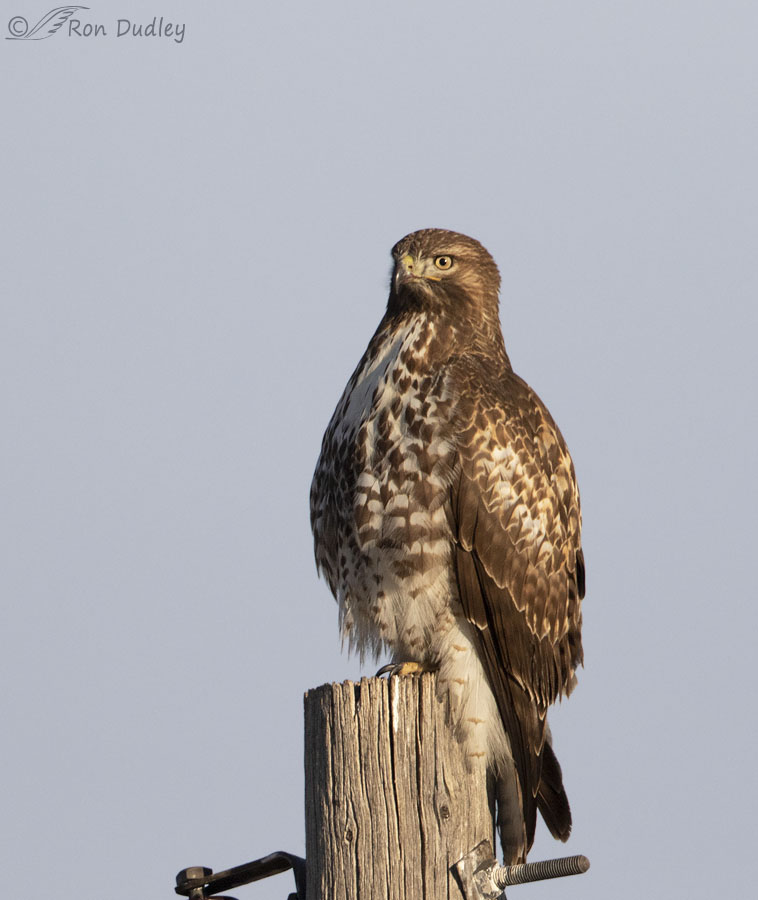
1/5000, f/6.3, ISO 800, Canon 7D Mark II, Canon EF 500mm f/4L IS II USM + EF 1.4 III Extender, not baited, set up or called in
I know, I know – yesterday I told you I seldom post photos of birds on utility poles so what do I post the very next day? Yup, a hawk on a pole. But bear with me, “he” won’t stay here for long.
From the get-go he seemed a little nervous about me stopping my pickup on the side of the road even though I wasn’t particularly close and there’s quite a bit of traffic on that road. His alert posture suggested to me that he might be leaving soon so after a few photos I took off my teleconverter so I had a better chance of avoiding clipped or cut off body parts if he took off.
With larger raptors, buteos in particular, there are four indicators of imminent takeoff that I always watch carefully for so I can prepare myself for launch: rousing, stretching, pooping and turning into even a slight breeze just prior to takeoff. They don’t always do any of them but they often do one or more of them. It’s enough of a reliable behavioral pattern to be extremely useful to the bird photographer with takeoff and flight shots in mind.
This hawk performed three of the four just before he lifted off.
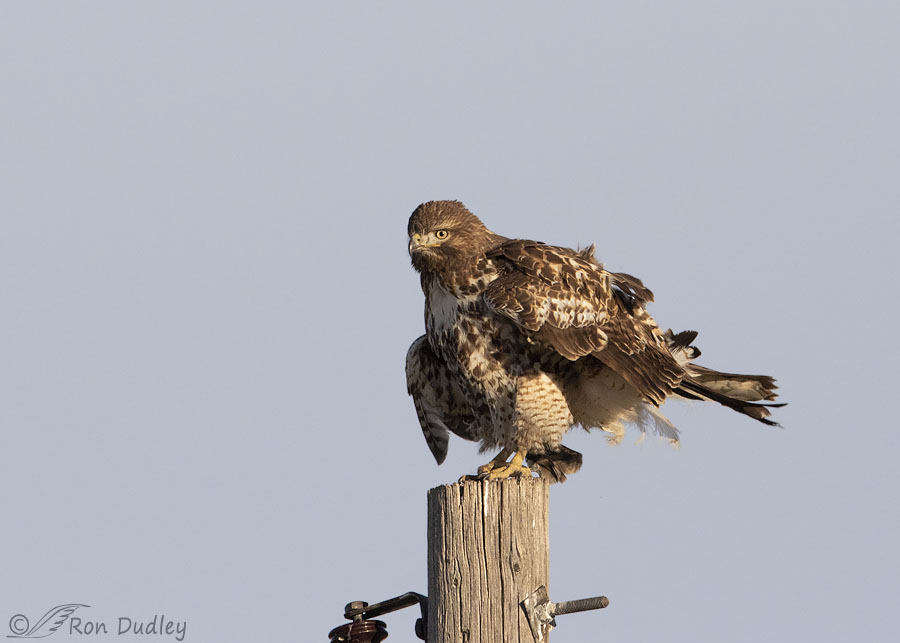
1/5000, f/7.1, ISO 800, Canon 7D Mark II, Canon EF 500mm f/4L IS II USM, not baited, set up or called in
He roused…
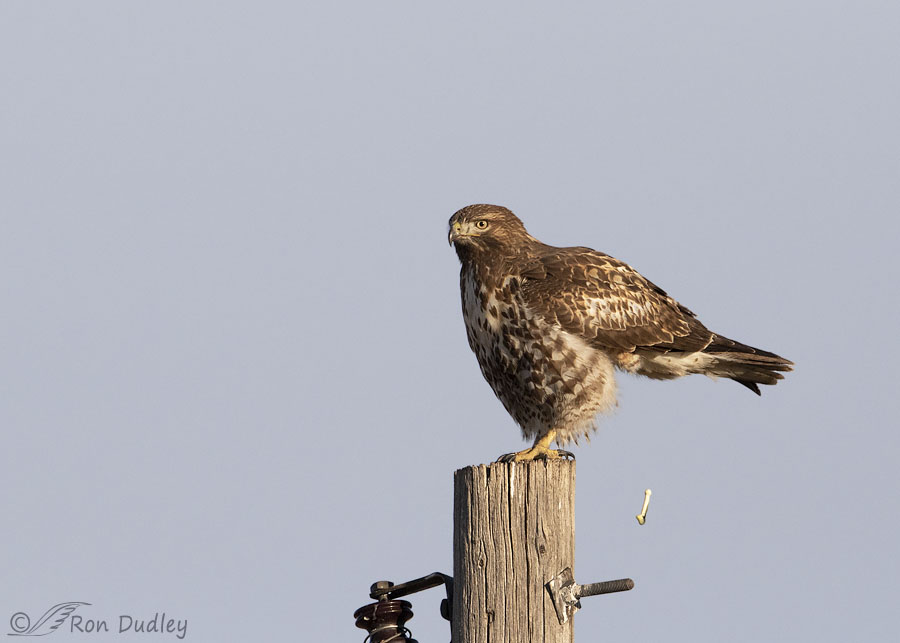
1/5000, f/7.1, ISO 800, Canon 7D Mark II, Canon EF 500mm f/4L IS II USM, not baited, set up or called in
pooped,
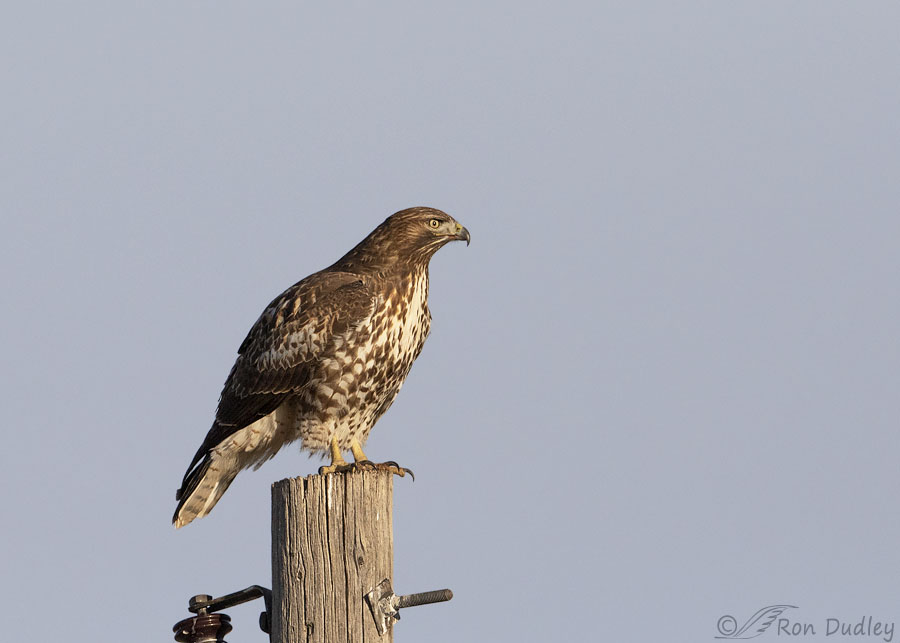
1/5000, f/7.1, ISO 800, Canon 7D Mark II, Canon EF 500mm f/4L IS II USM, not baited, set up or called in
and turned into the breeze. He never did stretch. At this point I was almost certain takeoff was imminent so I was sure glad I’d removed my teleconverter.
The next five shots are sequential without any skips.
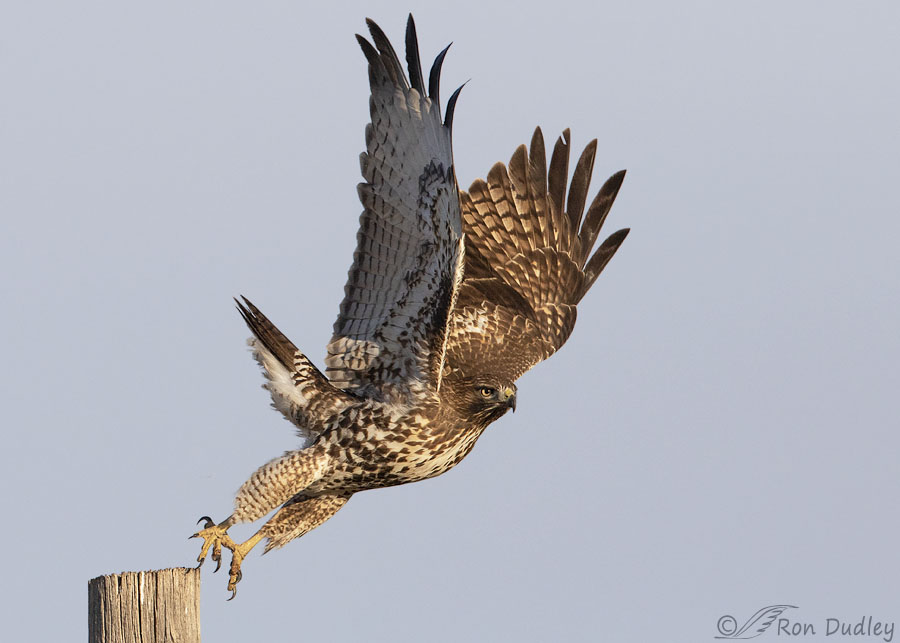
1/5000, f/7.1, ISO 800, Canon 7D Mark II, Canon EF 500mm f/4L IS II USM, not baited, set up or called in
I love this takeoff posture. His posture also illustrates why it’s so damned easy to clip or cut off body parts when they take off, especially up top.
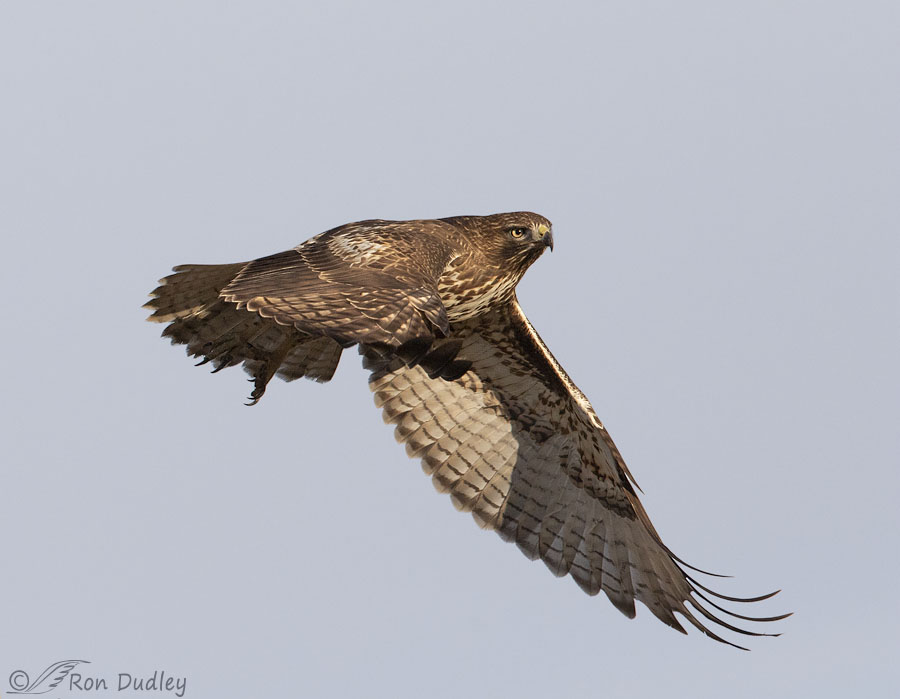
1/5000, f/7.1, ISO 800, Canon 7D Mark II, Canon EF 500mm f/4L IS II USM, not baited, set up or called in
In this photo and the previous one I had the bonus of direct eye contact.
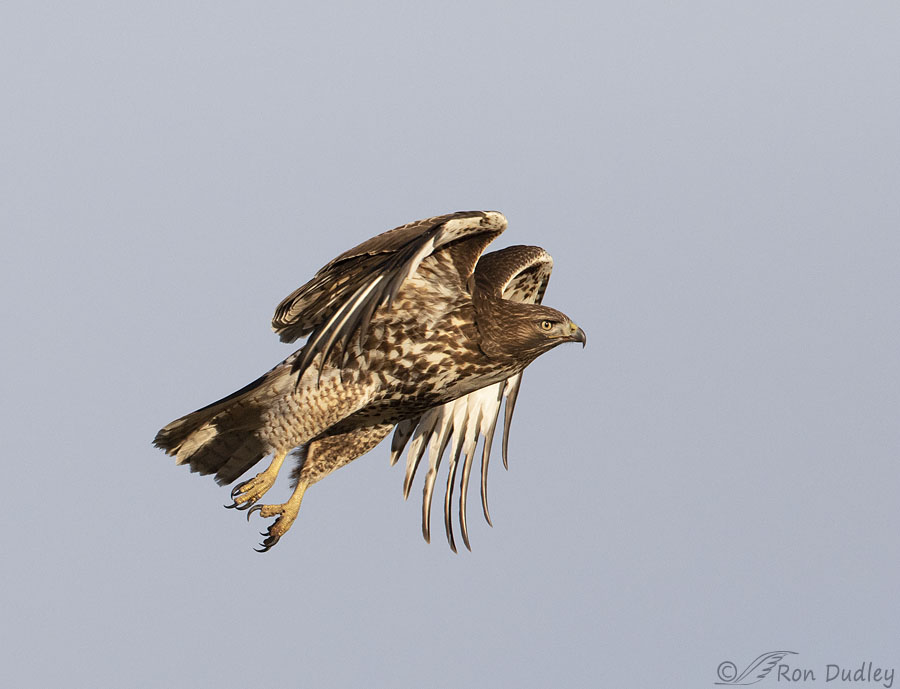
1/5000, f/7.1, ISO 800, Canon 7D Mark II, Canon EF 500mm f/4L IS II USM, not baited, set up or called in
I believe this shot needs moderate clockwise rotation but I had to choose between the lesser of two evils – either leave the bird slightly tipped in flight or add canvas on the right for composition purposes to replace the canvas I’d lose if I rotated the image. I really don’t like to add canvas so I chose the first option.
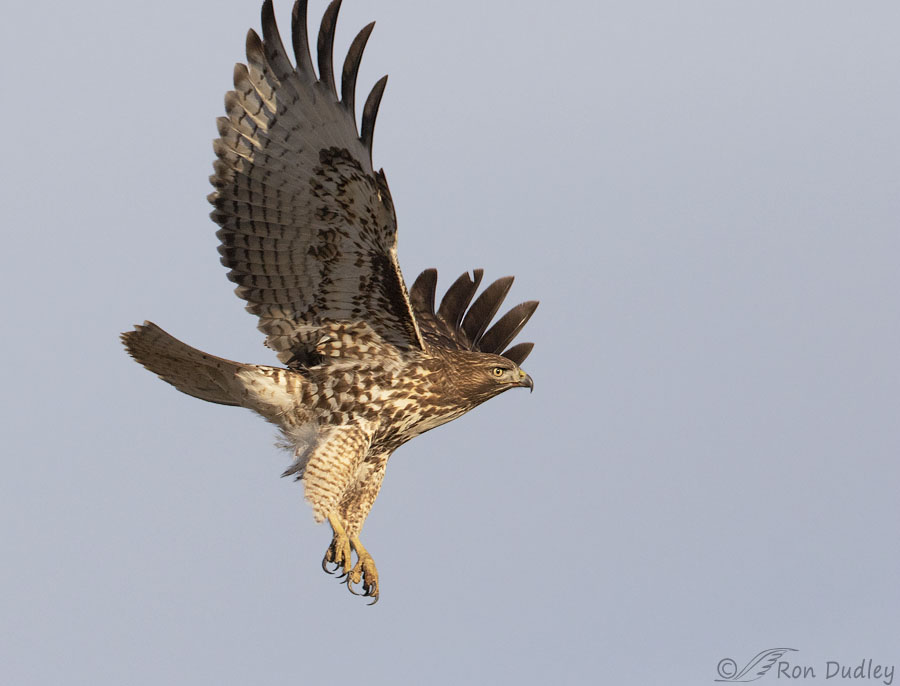
1/6400, f/7.1, ISO 800, Canon 7D Mark II, Canon EF 500mm f/4L IS II USM, not baited, set up or called in
Wouldn’t you know it! In one of the best flight shots of the series I clipped three flight feathers on his right wing.
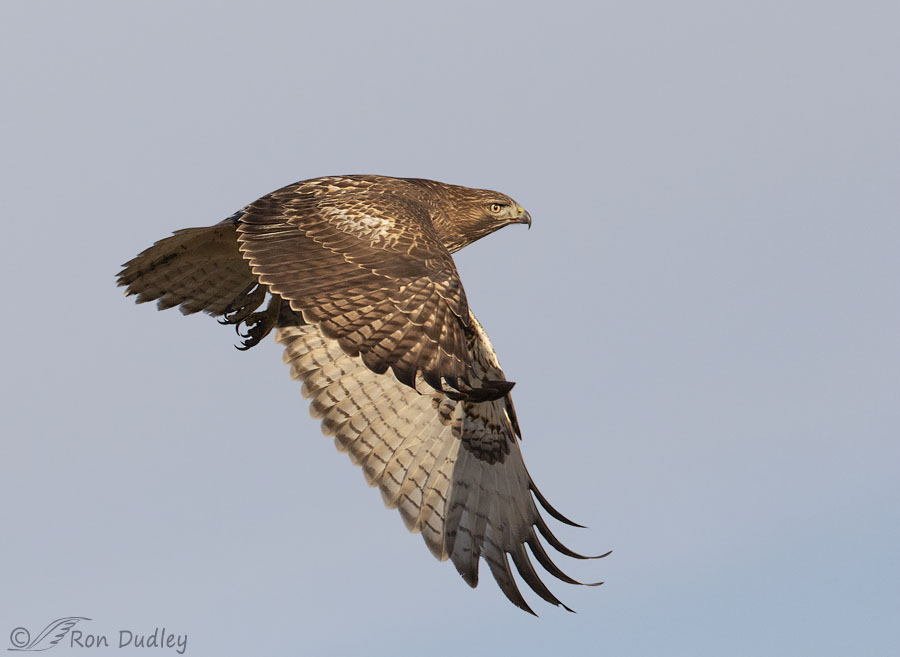
1/4000, f/7.1, ISO 800, Canon 7D Mark II, Canon EF 500mm f/4L IS II USM, not baited, set up or called in
This is the last flight shot I’ll include. The next two photos were also sharp with no body parts clipped or cut off but I wasn’t fond of his wing positions and he was far too close to the right edge of the frame.
This hawk saved my day yesterday. I’ll probably delete every other photo I took that morning.
Good bird!
Ron


Superb series!
Give me that majestic launch image any and every day.
Inspiring.
Educating.
Who could ask for anything more!
Thanks very much, Dave. Gotta admit, I’m pretty damn happy with that shot.
But “Who could ask for anything more” planted an earworm in my head that I’m sure my brain will be humming as I’m trying to go to sleep… 🙂
Great series of shots, Ron!
Thanks, Jane.
WOW…a really neat series of photos! He indeed was most co-operative for you. I too await the rousing of feathers and pooping cycle…sad to say I have a lot more of poopy photos vs take-off photos though. 😉 With my lens I have to really sneak up on the wary Red-Tails; I don’t have the great distance factor you do. To compensate sometimes if a car is driving ahead of me I try to get close enough that the first car gets his attention and I can stop and shoot before he zeros in on me…sometimes it works. The little tricks we use makes the day interesting.
Occasionally I’ve tried that strategy too, Kathy. Sounds like it works better for you than it has for me.
To a bird photographer, the shot with the clipped body parts always seems the best. I loved ALL your great shots. Also enjoyed the lesson on takeoffs. Thank you.
Your first sentence is spot on, Richard. Or at least it had the potential to be the best.
Haha, touche Professor!
Sweet shots Ron. I thought the pooping was the best.
Thank you, Bradley.
NEAT! 🙂 Wonderful series and education on what to watch for! The “push off” is great as is the direct eye contact. Even with the clipped feathers it’s still better than I ge most of the time……. 😉 “Good Bird” indeed!
Judy, I often say “good bird” out loud when I leave a bird that had been cooperative. But I’ve been known to use less flattering terminology when they hadn’t…
I love the lift off shot!
Thanks, April.
Damn, If you didn’t nail those take off shots !! I would have called it a day. Not getting any better than that !! I’ll bet your glad that you did remove that T/C. Not an easy task maneuvering the lens in your front seat of the truck behind the steering wheel.
I’m very happy with that takeoff shot, Gary. I think it might be one of my better ones of any species.
And you’re right. That steering wheel often gets in the way, especially when I’m trying to follow a bird in flight as it begins to move behind me. That very thing happened this morning with a harrier. I keep forgetting to raise that steering wheel!
Excellent take-off shots Ron. I can see why you would be willing to delete the rest of your shots taken that morning. I have followed that same procedure when waiting for eagles to take-off. Really good too that you were able to have a clear catch-eye in every one of these.
Thank you, Everett.
“Good bird”, yes. Like praising my puppy when she does what she’s supposed to do, which is rare. Pretty bird and nice catch(s).
Thanks, Frank.
Ron excellent write-up and very educational. Your images are always clean and tack sharp. I struggle with hand-holding a camera/lens and getting sharp images. Would you share or have you written a blog on your choice of metering modes and focusing settings and techniques?
John, I use evaluative metering, Case 2 AF, back button AF and usually a single AF point in the center activated. I typically shoot at unusually high shutter speeds when I can. Some folks think I’m crazy for doing it but I definitely get more sharp shots that way. It really helps with long focal lengths and moving subjects, especially when they’re fast subjects like birds.
What a superb series Ron! Thanks for sharing!
Charlotte
Thank you, Charlotte.
Very nice demonstration, Ron! Every image is outstanding even if you bemoan the loss of a few pinion-tips. For most of my flight shots I am looking at only part of the sky overhead and the bird may be visible for a few seconds and I am lucky to get at least a part of the bird in the viewfinder. Hardly time to switch to flight shot pre-sets, much less remove the teleconverter and reattach the lens. I hate changing lenses in the field anyway, what with all the gnats and flying dust particles.
I know what you mean, Ken. We’re always taking chances when we swap out gear, in more ways than one. But for me it’s often worth it so I usually make the attempt when I can.